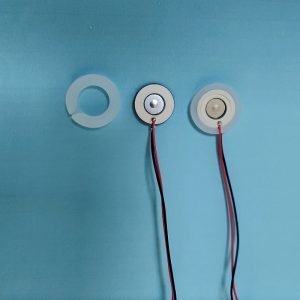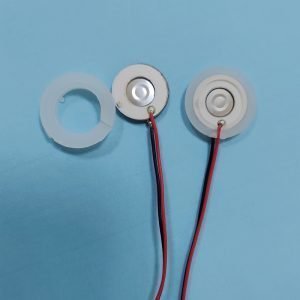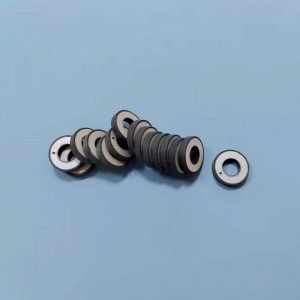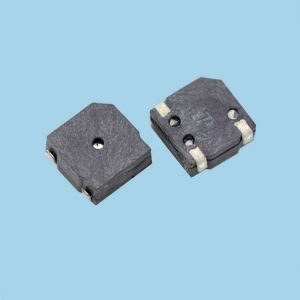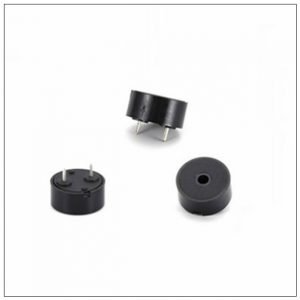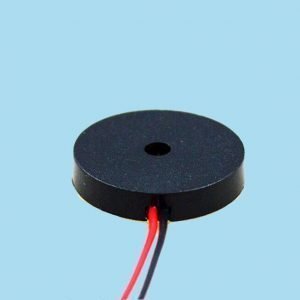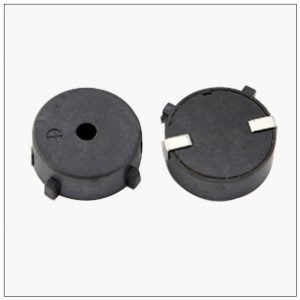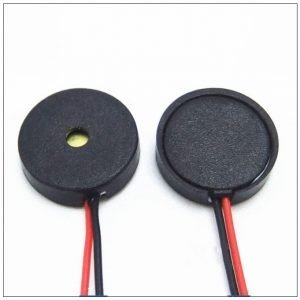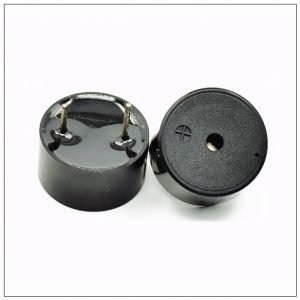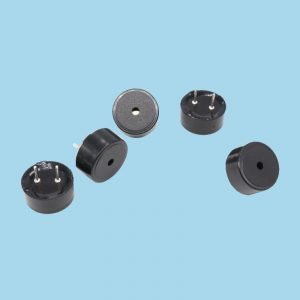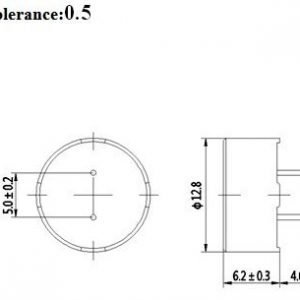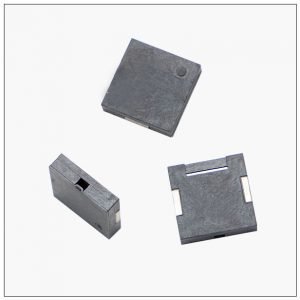Piezo Buzzer
Piezo buzzer is mainly composed of a multivibrator, a piezoelectric element, an impedance matcher, a resonance box, and a shell. Some piezo buzzers are also equipped with light-emitting diodes.
The multivibrator is composed of transistors or integrated circuits. When the power is turned on (1.5~15V DC working voltage),
the multivibrator starts to vibrate and outputs 100~500HZ audio signals, and the impedance matcher drives the piezoelectric buzzer to sound.
The piezo buzzer is made of lead zirconate titanate or lead magnesium niobate piezoelectric ceramic material. Silver electrodes are plated on both sides of the ceramic sheet, and after polarization and aging treatment, they are then glued together with the brass sheet or the stainless steel sheet.
Active piezoelectric buzzers are often more expensive than passive ones because there are multiple oscillating circuits inside,
which can emit a sound at a specified frequency only by connecting to a direct current with a rated voltage. The frequency is determined by the internal oscillating circuit and cannot be changed.
After the passive is excited, the resonant cavity open piezoelectric buzzer is driven by the square wave signal provided by the circuit to drive the vibrating plate to vibrate.
The air is compressed and the supplement time is relatively short, the vibration damping is small,
the vibration plate amplitude is relatively large, and it is suitable for lower current consumption specifications. Or respond to sound in a lower frequency range, with a normal tone;
The opposite is true for the passively activated resonant cavity sealed piezoelectric buzzer, which is suitable for higher current consumption specifications, or higher frequency range response sound, with better timbre.
piezoelectric buzzer scope of application: watches, small calculators, doorbells, electronic toys, electronic clocks, electrical products, anti-theft products, underground alarms, smoke alarms, and electronic toys.
Showing all 9 results
12V Piezo Buzzer
Buzzer3V Piezo Buzzer
Buzzer5V Buzzer
Piezo Passive BuzzerActive Piezoelectric Buzzer
BuzzerLoud SMD Piezo Buzzer
BuzzerMini Piezo Buzzer
Piezo BuzzerPiezo Sound Buzzer
BuzzerSmall Piezo Buzzer
Piezo Passive BuzzerSMD Small Piezo Buzzer
Buzzer

